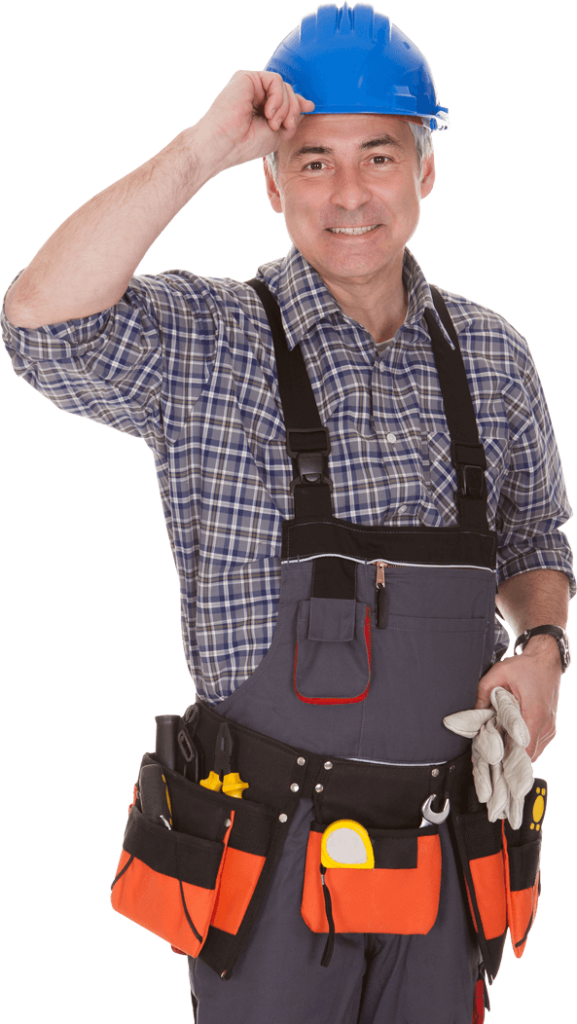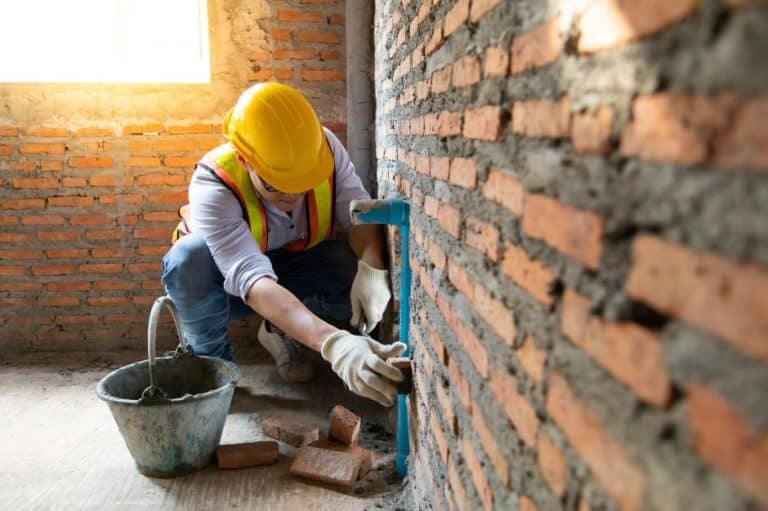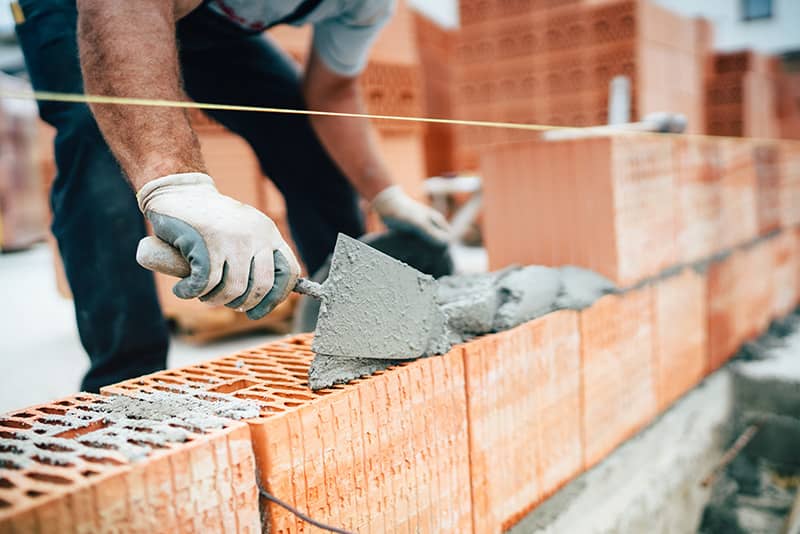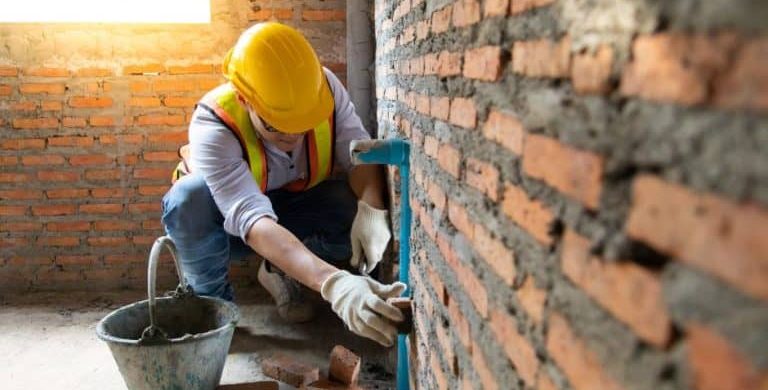COMPARE PRICES AND SERVICES TO RENOVATE ROOMS, FLOORS, WINDOWS, ETC.

GET 3 QUOTES FOR YOUR RENOVATION AND WORKS

"*" indicates required fields


A Brief Guide to Masonry Weep holes for Residential Bricks

If you don’t work in construction or masonry, chances are you are not familiar with the term “weep holes” in bricks. However, this is very important to know when you are installing bricks in your house.
Some homeowners who don’t know the role of these holes in masonry filled them up to prevent insects from getting in.
- In the following article, we'll explain what you need to know to make sure your renovation goes smoothly, especially if you are planning a DIY project!
All about Weep holes: Why are they important?
To understand the important role that weep holes in walls play, we must first explain a wall’s components. The wall has a masonry coating and a wooden component. Thus, it has two membranes that protect it internally and externally against rain.
The exterior includes bricks, mortar joints, or stones, grouting joints, and flashing. The interior is protected by the lining membrane.
Masonry is not rainproof. Heavy rains increase the amount of water that can penetrate the masonry facing through cracked mortar joints or through the brickwork. The quality of the installation and materials, and the condition of the flashings and the building envelope account for the amount of water penetration.
The water that penetrates the masonry wall will trickle down. This requires good sealing and drainage at the bottom of the wall. Here you will find the weep holes and the base flashing.
Base flashing
Flashing begins at the exterior face and covers the junction between the foundation wall and the siding. It must extend to at least 6 inches up the wall behind the sheathing membrane. The intersection between the sheathing and the flashing must be well-sealed.
Weep hole (Chantepleure)
The weep hole is an opening on a brick wall. It can be identified by the vertical mortar joint between two bricks which is not blocked by a solidifying product. All brick walls are not necessarily fitted with weep holes.
Weights are placed in the first row, and above the openings, like windows and doors. This allows access between the masonry and the intermediate coating.
Weep holes help to evacuate water that infiltrates the masonry. If they are clogged, water will build up behind the wall and will penetrate the building over time. They also ensure that air can circulate in the gap behind the masonry.
Weep holes offer many advantages that should not be underestimated. In the table below, we explain everything you need to know about this feature of the brick wall:

|
|
Airflow |
|
Elimination of Water |
|
Prevention of Debris |
|
Delayed installation |
|
Weep holes are essential in brick walls. It is, therefore, important not to fill the holes if you renovate your wall.
Brick weep holes should not be filled
If you decide to do a brick wall renovation, you should not fill weep holes because they have a purpose!
Throughout the year, the brick wall is confronted with the difficult and unique climatic conditions in Quebec.
The effect of the mortar
Mortar is the most common product used to connect bricks together. This effectively seals the spaces to ensure constant and permanent solidity of a brick wall. However, a side effect of this efficiency is its tightness. In harsh winters or heavy rain, water can accumulate behind the brick wall and cause moisture problems.
Weep holes were put in place to prevent water build up.
Indeed, the damage caused by the accumulation of liquid and humidity behind a brick wall will not be visible to the naked eye. It may be many years before you realize the seriousness of the situation.
In addition, if you sell your house in the future with weep holes that were filled, the property can face issues that you can be held responsible for due to hidden defects.
How to install a weep hole on your wall?
Whether the house you bought is old or new, it is possible that it does not have a weep hole. If you want to install a weep hole, the procedure is not the same in each case.
For older houses
If you buy a magnificent ancestral house without a weep hole, don’t panic!
It is always possible to have one installed. Weep holes were not invented until this century so don’t jump to conclusions about negligence on the part of the previous owner.
The first step is to check if the absence of weeping has caused damage to the interior of your brick walls.
It is advisable to change a few bricks around the area were you want to install the hole. Here are a few things to keep in mind:
- The two walls of the weep hole must be installed 32 inches apart from each other.
- It is advisable to install the weep hole in a strategic place such as above a door or near a window.
- Take the time to clear the joints well so as not to leave any mortar residue on both sides of the wall where the weep hole is located.
In the case of a newer homes
If you buy a new house without a weep hole, you need to investigate. The fault may lie with the contractor associated with the construction.
In this case, it’s best not to do the installation yourself. Behind the walls of newer homes, you may find a cladding composed of membranes and flashings. The latter can easily be damaged when the mortar joint used to install the weather stripping is pierced. It’s a good idea to get in touch with a professional bricklayer/mason who can do the inspection and advise you of the cost.
The Cost of Various Masonry Work in 2026
In case you need masonry work done in your home, here are the average prices for various masonry jobs in Quebec.
Most bricklayers charge an hourly rate of around $140 per hour. This rate considers factors such as association fees, insurance, profits, etc.
If the rate offered to you is much lower, exercise caution because the mason may lack credentials or experience.
Repairs on the facade
Repairs on a whole façade is an expensive masonry job. If a few bricks need replacement and there are no complexities or obstacles, the cost runs from $30 to $35 per square foot.
The cost of new bricks is about $6 to $10 per square foot for the insulation and about $30 to $40 per square foot for the bricks.
Repointing
When the mortar holding the bricks together has disintegrated and the joints no longer hold, brick repointing becomes necessary. If you don’t do this, your façade could come crumbling down.
The average price for brick repointing is $20 to $30 per square foot.
Repairing the foundation
Foundation plastering costs about $7.50 per square foot. Work below the window ledges could cost from $500 to $600 while lintels above the windows cost around $1,000 to $2,000.
Bulging Brick: Don’t let your brick wall collapse
Bulging brick is a dangerous situation. If you observe your masonry wall to have a bulge, contact a professional immediately.
In most cases, it can be remedied by solidifying the structure. At times, however, removal of the stones or bricks and rebuilding part of the wall may be necessary.
Unusual swelling on stone walls can indicate bulging brick problems. A window may suddenly become uneven. Temperature fluctuations cause brick problems so monitor your walls during periods of freeze-thaw.
Don’t delay any issue with your brick wall – don’t wait for it to collapse!
Get quotes for masonry work from the best professionals

Not everyone has the necessary skills to handle a variety of masonry jobs. If you want a professional to do it for you, we can help!
Just fill out the form on this page to receive up to 3 quotes from experts in your area.
With the help of masonry contractors, you can feel confident that your masonry needs will be handled with the utmost professionalism and knowledge for the best results.
Comments are closed.
COMPARE PRICES AND SERVICES TO RENOVATE ROOMS, FLOORS, WINDOWS, ETC.

GET 3 QUOTES FOR YOUR RENOVATION AND WORKS

"*" indicates required fields


Copyright© 2026 Compare Home Quotes.
Oolong Media






